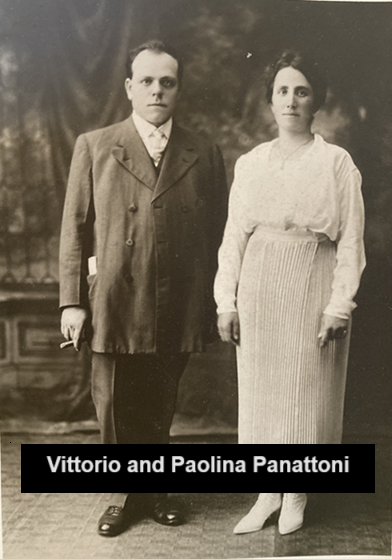ABOUT THE DANTE CLUB
In 1900, Mary Ellen Bowden bought the Crocker Home at the corner 3rd and “O” streets which became St.Stephen’s. St. Stephen’s included a school, day care center and mission. The people that served at St. Stephen’s were mainly working class members of ethnic communities other than Irish and German. At that time, Sacramento main industry was canning fruits and vegetables and employed many immigrant women during the canning season.
In 1904, Fr. Michael Gualco wrote his concern to Bishop Thomas Grace and to the Apostolic Delegate Diomede Falconio about spiritual care of Latin Catholics (primarily Italian and Portuguese) in the Sacramento Diocese. In 1905. Bishop Grace and Fr Gualco traveled to the Holy See in Rome to recruit Italian priests to come and serve in the Sacramento Diocese. Later in August 1905, two priest and one seminarian were selected: Fr Temistocle Eugenio Melo D.D., Fr. Domenico Taverna and Mr Benso Massimo. During Fr Mela’s youth, Piedmont was a center of anti- Catholicism.
Fr. Mela was the founding Pastor of St. Mary’s. Fr. Taverna served in various places including Sutter Creek and, later, became the pastor of St. Mary’s. Early 1906, Franciscan sisters staffed a school that primarily educated children of the immigrant community. For a time, Bishop Grace preferred not to have a separate parish at St. Stephen’s and it was staffed by priests from Blessed Sacramento Cathedral. However, there was a strong desire by the ethnic groups St. Stephen’s to form their own national parishes. At that time, Fr. Mela began to form what was to become St. Mary’s parish. Fr. Mela looked for land and to secure money to build a church. In July 1906, he purchased land at 818 “N” Street for the original St. Mary’s Church. Originally, the first structure was a wooden barn and was converted into the church with various modifications over the years. By the first Sunday in November 1906, mass was being offered at ST. Mary’s Church and about 200 parishioners were registered.
By 1909, the Portuguese community desired to have their own separate parish. The 1910 Catholic Directory lists two communities at the 8th and “N” location. St Mary’s (Italian) with Fr. Mela as pastor and church for the Portuguese with Fr. J Azavedo as pastor. By 1912, the Portuguese community had found St. Elizabeth’s parish.
The reduction of the parish population resulting from the establishment of St. Elizabeth’s created financial problems for St. Mary’s. In addition, the location of the church at 818 “N” Street was far enough away from the center of the Italian population that Mass attendance suffered.
Therefore, Fr. Mela decided to move the church to the people. Fr. Mela purchased property at 7th and “T” Street, which is where Our Lady of Guadalupe Church is now located. The parish did not have the money to build a new structure at the 7th and “T” Street site. Fr. Mela decided to section the original building, move it to the new location, reassemble a modified structure, constructing the steeple and hanging the bells. St Mary’s reopened on Sunday August 23rd.
Mass attendance increased immediately and Fr. Mela had to consider adding new seating in the church. Sunday school attendance went up 400% in one week. Fr. Mela had only four more years to serve at St. Mary’s. He died during the influenza pandemic on October 28, 1918. Fr. Domenico Taverna became Pastor of St. Mary’s 1918 to 1931.
St. Mary’s Catholic Church was the capital city’s “Italian” church”. Many Italians’ transition to Sacramento was difficult. Adapting to a new language, a new culture and a new way of life was not easy. Some grew homesick, missing their relatives and friends in Italy.
In 1926 the Dante Club was founded by Victor Panattoni who had emigrated from the Toscana region of Italy and was an active member of St. Mary’s Church. He owned the Capital Press printshop and wrote the first Italian newspaper in the area, La Capitale which was published for over 40 years. He also had been appointed as Italian Consular Agent for northern California. He became the Dante Club’s first President. His wife Paolina believed that the Italian women of Sacramento also needed a gathering place, so in 1926 she founded the Dante Club Ladies Auxiliary along with a committee of Italian women. She assisted a family member to become the first President. These ladies enjoyed socializing, sharing recipes, assisting with Italian language classes and raising funds for charitable causes.

